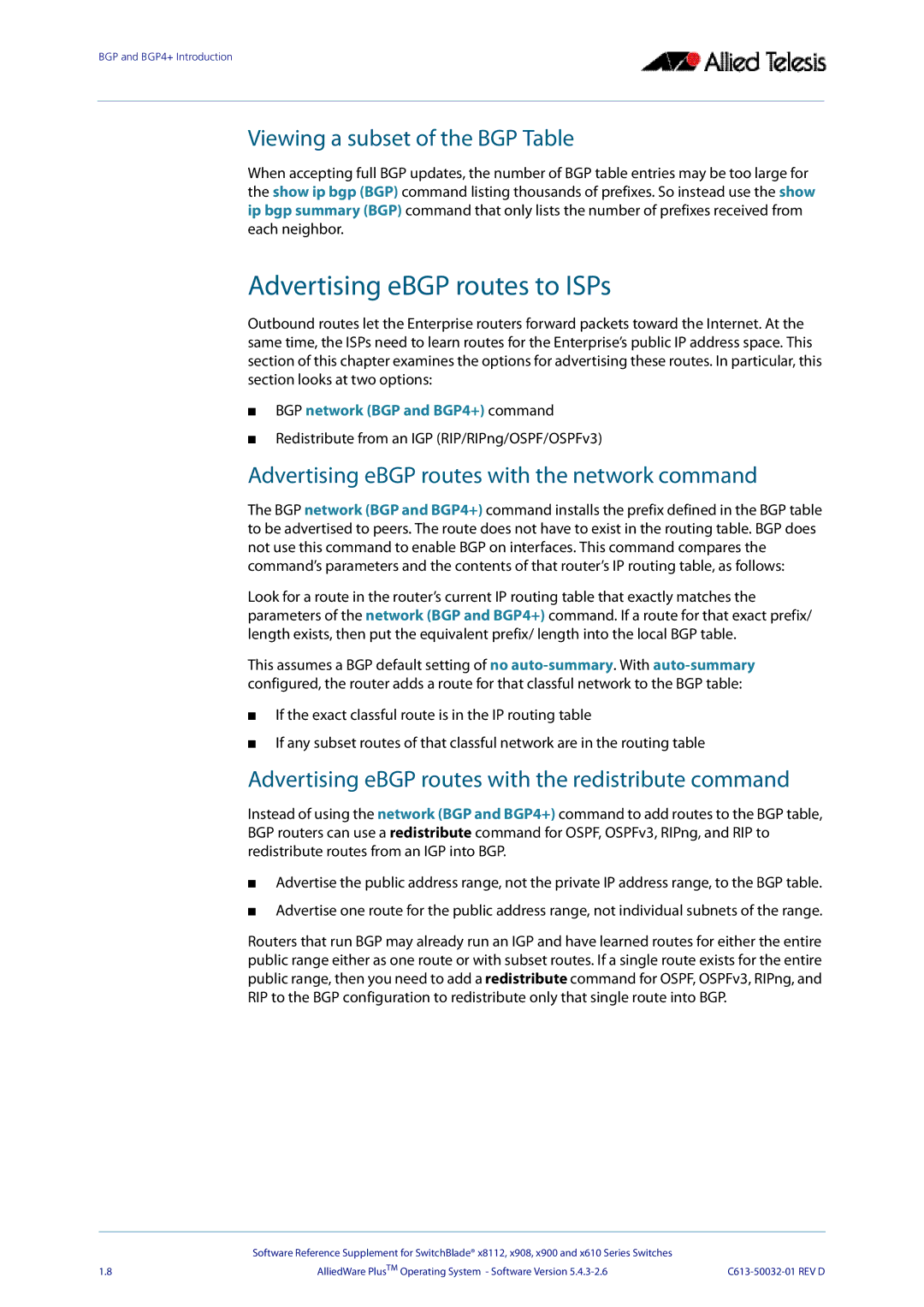
BGP and BGP4+ Introduction
Viewing a subset of the BGP Table
When accepting full BGP updates, the number of BGP table entries may be too large for the show ip bgp (BGP) command listing thousands of prefixes. So instead use the show ip bgp summary (BGP) command that only lists the number of prefixes received from each neighbor.
Advertising eBGP routes to ISPs
Outbound routes let the Enterprise routers forward packets toward the Internet. At the same time, the ISPs need to learn routes for the Enterprise’s public IP address space. This section of this chapter examines the options for advertising these routes. In particular, this section looks at two options:
■BGP network (BGP and BGP4+) command
■Redistribute from an IGP (RIP/RIPng/OSPF/OSPFv3)
Advertising eBGP routes with the network command
The BGP network (BGP and BGP4+) command installs the prefix defined in the BGP table to be advertised to peers. The route does not have to exist in the routing table. BGP does not use this command to enable BGP on interfaces. This command compares the command’s parameters and the contents of that router’s IP routing table, as follows:
Look for a route in the router’s current IP routing table that exactly matches the parameters of the network (BGP and BGP4+) command. If a route for that exact prefix/ length exists, then put the equivalent prefix/ length into the local BGP table.
This assumes a BGP default setting of no
■If the exact classful route is in the IP routing table
■If any subset routes of that classful network are in the routing table
Advertising eBGP routes with the redistribute command
Instead of using the network (BGP and BGP4+) command to add routes to the BGP table, BGP routers can use a redistribute command for OSPF, OSPFv3, RIPng, and RIP to redistribute routes from an IGP into BGP.
■Advertise the public address range, not the private IP address range, to the BGP table.
■Advertise one route for the public address range, not individual subnets of the range.
Routers that run BGP may already run an IGP and have learned routes for either the entire public range either as one route or with subset routes. If a single route exists for the entire public range, then you need to add a redistribute command for OSPF, OSPFv3, RIPng, and RIP to the BGP configuration to redistribute only that single route into BGP.
| Software Reference Supplement for SwitchBlade® x8112, x908, x900 and x610 Series Switches |
|
1.8 | AlliedWare PlusTM Operating System - Software Version |
